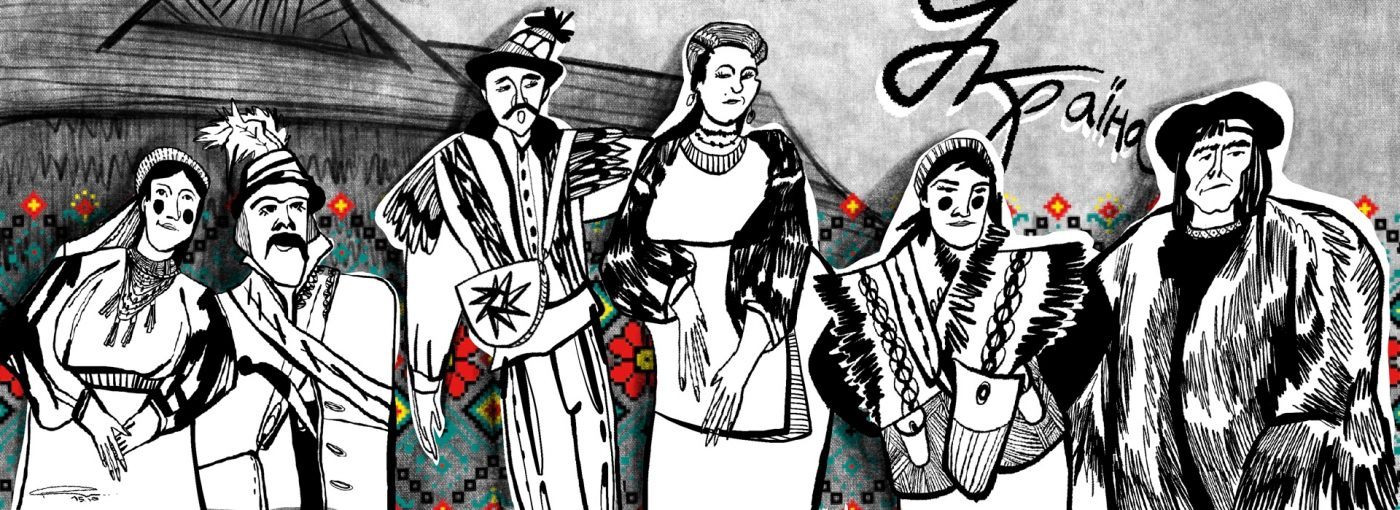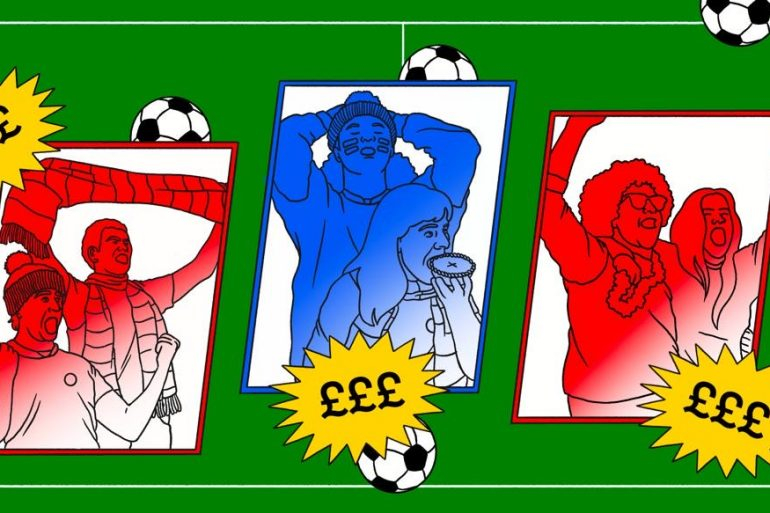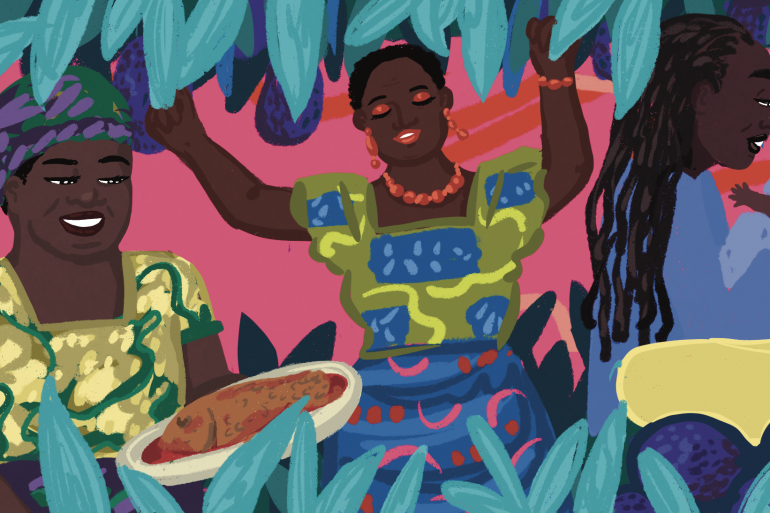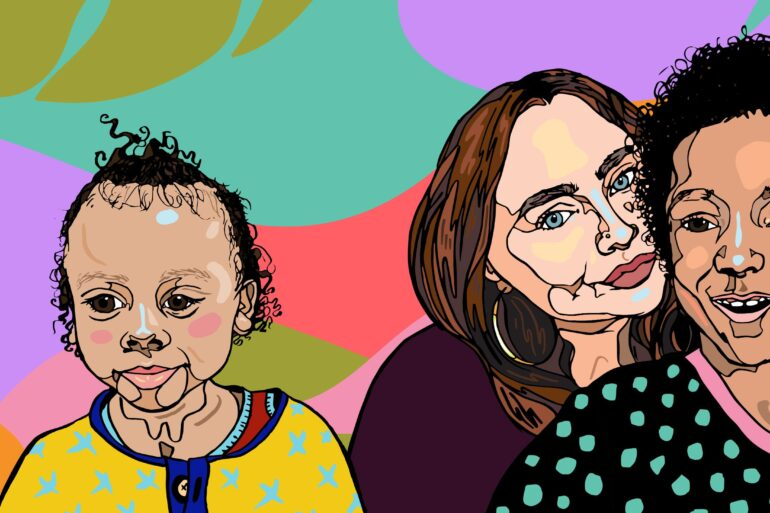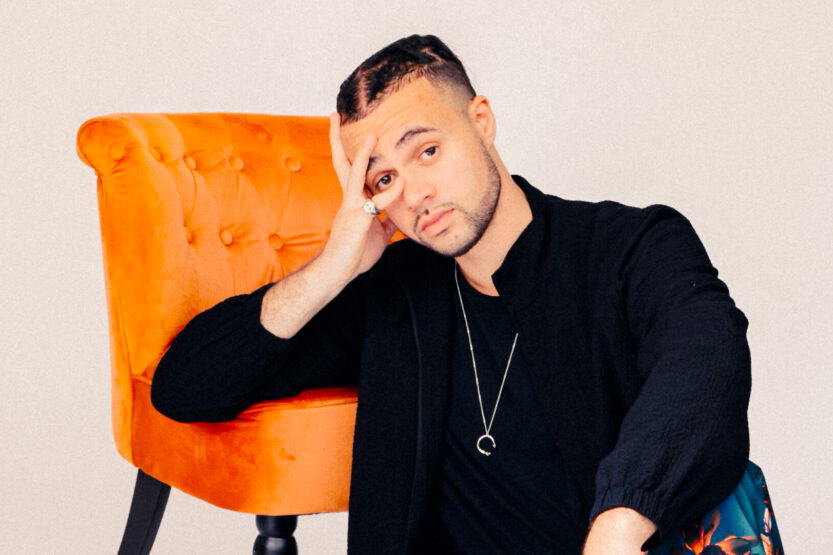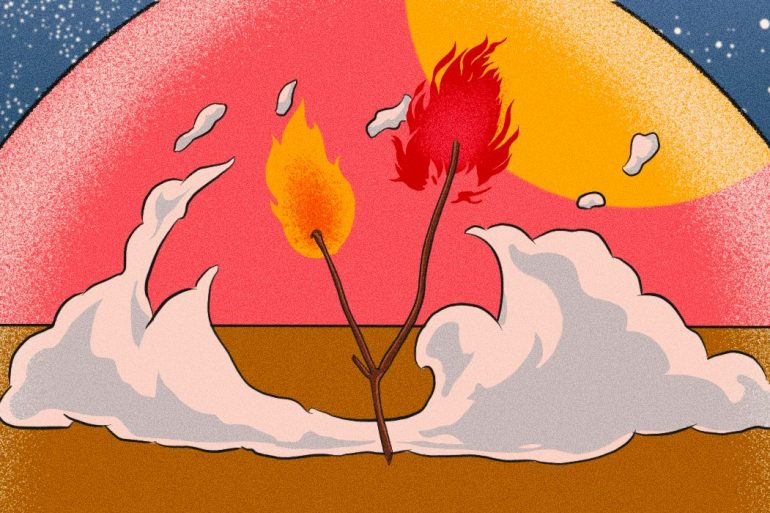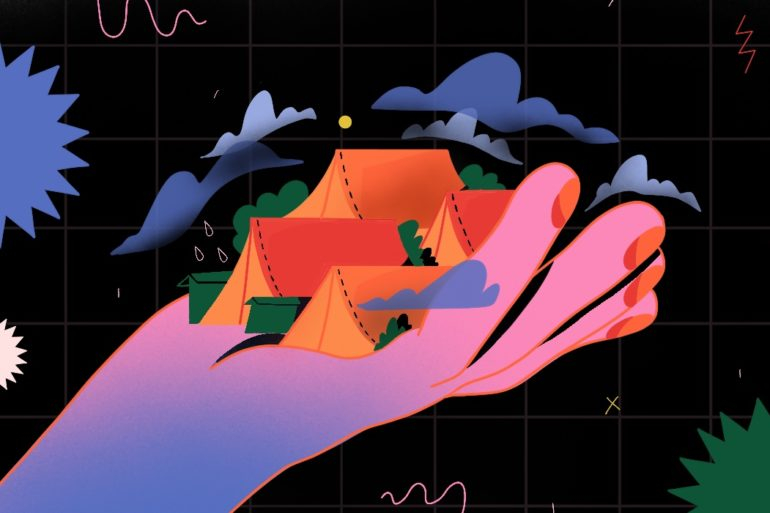Modern music culture in Ukraine has a short but rich history, and has become an integral part of the contemporary Ukrainian psyche. But now collectives and DJs of Kyiv are being forced to adapt to the brutal realities of a war that the Ukrainian youth didn’t ask for.
After Ukraine regained its independence in 1991, fresh opportunities for parties emerged: DJs began to spin newly-imported German records and forge more musical connections with the west. Festivals and squat raves alike came about, with an emphasis on encouraging homegrown talent and providing music for the Ukrainian youth, who were less concerned with the political clashes of the generation before.
This culminated in 2014 with the formation of the cult CXEMA parties – huge raves held in urban warehouses or under bridges, which has since spawned even more dynamic electronic music events.
Although Kyiv is often compared to Berlin in terms of its nightlife, the relation is largely superficial, and doesn’t do justice to the particular DIY aspects of the Ukraine scene, and its emphasis on inclusivity in the face of a society not known for being queer-friendly.
As DJ Radiant Futur, who is based in Kyiv and has released music under the Muscut label, explained to me recently, “rave culture in Ukraine is developing rapidly. We hold world-famous festivals, the atmosphere of our nightlife is very attractive to foreigners and their number at parties is growing every year. That’s a good thing: we have an identity, and we are not just the “New Berlin”, it is worth remembering this.”
The special character of Ukraine’s rave scene meant the impact of Russia’s full-scale invasion in February 2022 was felt even harder by those who had strived to create such a movement.
Raving as the world burns
To discover what happens when war disrupts nightlife, we can look to Russia’s original invasion of eastern Ukraine in 2014, after Prime Minister Viktor Yanukovych was ousted due to the pressures of the Maidan Revolution. As the protests and occupation of the central square in Kyiv raged on, the clashes and instability meant the live music scene was suspended.
This prompted DJ Slava Lepsheev to create CXEMA raves to counter the lack of fun and joy happening amongst the trauma.
CXEMA functioned as a musical movement; it was politically aware but mainly focused on the spirit of the rave as an antidote to the crisis. CXEMA events have since become widely celebrated and well-attended, even popular to techno tourists, serving as an increasingly rare example of uncommercialised, free-spirited raves.
CXEMA parties can be characterised as youthful and raw, with crowds that have a healthy appreciation of 1990s sportswear. They brought a certain kind of disaffected youth subculture to life, contrasting eclectic sound and vibrant aesthetic to the very serious and sombre political instability outside of that space.
CXEMA formed as an act of escapism, and the chance to release pent-up anger and frustration that young people were evidently feeling from Ukraine’s political situation. As photographer Sean Schermerhorn described, “there was a fuck-everything energy, and it was total transcendence.”
The collective Repair Together had a similar view: “When the war originally started in 2014, people needed somewhere to place their energy. They found a place to be together and the raves developed quite dynamically.”
CXEMA and other raves began and boomed because of the surrounding chaos, not just in spite of it.
Rave culture thriving in adversarial environments follows a tradition of sorts. The UK acid house rave and ecstasy explosion of the 1980s happened in part as a direct response to the economic hardship imposed by the politics of free-market Thatcherism. The movement evolved into free parties and underground festivals well into the ‘90s. Raves became so influential that the Criminal Justice and Public Order Act of 1994 specifically cited them in the government’s clampdown policy.
Ukraine’s rave scene grew beyond CXEMA parties after 2014, encompassing a range of labels, collectives and DIY events, each with their own stamp. This has progressed to include queer raves and sex-positive parties.
At its heart, the scene has always had a focus on inclusivity and promoting openness, in direct opposition to the often stifling and tumultuous political culture Ukraine has had since independence.
Rave culture has always been about resistance to societal norms and cultural oppression. However, since the full-scale invasion of Ukraine by Russia earlier this year, Kyiv’s rave resistance has morphed into an even more profound struggle.
The music scene at war
Many electronic artists who were unable to flee, or chose not to, were forced to diversify their skills to help the victims around them. The dual role that many ravers and DJs took on has worked to strengthen the connection between music and relief efforts. Clubs and venues were repurposed as volunteer or logistical hubs. Music label MysticTrax listed the work some of their signed artists have been doing since the war – which includes volunteering to help with shelter or delivering food and medicine to those in need around Kyiv.
DJ Radiant Futur is one of these artists, who spoke to me about how the war changed the way he approached his music.
“Like many others, when the war broke out, at first I couldn’t create music at all.. There was only complete shock, a desire to survive and help others in any way I could. I eventually decided to put some unfinished projects on SoundCloud and Bandcamp, because I thought that I might not survive, and a huge amount of my music would never be heard. If anyone bought a little music, I gave the money from the sale to charity or to support the army.”
Subscribe to shado's weekly newsletter
Exclusive event news, job and creative opportunities, first access to tickets and – just in case you missed them – our picks of the week, from inside shado and out.

One of Radiant Futur’s tracks, ’Journey in the deepest of the eyes’, was then noticed by Dima Nikolaenko from the Muscut label, who offered to publish it in a charity compilation. Subsequently, he offered to publish a whole album of similar music. “This was an incentive to return to music,” says Futur.
In the height of the war, music production did not stop, but rather adapted and intermingled with resistance efforts. Many Ukrainian DJs kept creating and releasing tracks to fundraise or to provide an outlet for their grief.
The war effectively shifted the Ukrainian music scene to become one of greater social purpose.
Collective action
Many Ukrainian rave collectives encompass a social mission. Shum.Rave (shum literally means noise in Ukrainian), an NGO and community organisation, has its origins holding raves in war-torn ruins in Slovyansk in the Donetsk region.
Since it was founded by Eugen Skrypnyk, or Zhenia, Shum has started to change the perception of Ukraine’s east for the better by providing a platform for disaffected young people and building cultural ties across the country.
JMDasha, a DJ who has been part of Shum.Rave since its inception, added in a recent discussion with me: “Shum.Rave started as a series of parties in the Donbas, which became a protest against the lack of nightlife and culture, including a curfew at 11pm. We realised that we wanted to make our party with our own rules. So the noise was born. We are a team now and for me, the Shum is a second home.”
The Repair Together collective has found an even more intimate way to combine Ukraine’s legendary love of rave with its need to provide direct aid to victims of war. DJs and organisers put on ‘clean up’ raves to repair damaged homes in recently liberated towns of Ukraine such as Chernihiv, appealing to volunteers to fix structures and undo the destruction whilst grooving to the beats.
The organisers, who spoke to me as a collective, told me how the clean-up efforts started without music. Yet it soon became apparent that the 300 volunteers there were eager not only to do an important job, but to have fun and socialise, to focus on things besides the conflict.
“So we came up with an idea, that in order to repair Ukraine after the war, we need volunteering to become the lifestyle of our generation. To make it real, volunteering must be not only physical work but also joyful, social and attractive to people. Since we loved parties so much in the past we decided to combine it.”
“During the second or third clean-up rave, a lot of internationals joined virtually. It felt like there was a demand for such initiatives by young people across Europe. Our mission then grew, from not only repairing Ukraine and uniting local people, but to uniting people globally.”
The collective also links Ukraine’s love of raving to a sense of trying to figure out its national identity.
“Ukraine’s identity is complex, because it was suppressed for ages. It has two contradictory parts: the national and the legacy of the USSR. Living in a very young state, the institutions didn’t work at all. To survive in this society, Ukrainians created lots of horizontal connections and creative ways of figuring things out.”
This allowed raves in Ukraine to flourish as experiments in building a parallel culture which pushed back against corruption and turmoil.
Repair Together’s success is built on merging the joy of live music, the principles of freedom and solidarity celebrated within rave culture, and the need to return a sense of community and normality to war-struck parts of Ukraine. These are lessons we could even apply more widely.
“People must unite together and face these challenges together. The spirit of solidarity can create some basis to resist challenges that global institutions, including states, are not rising to.”
Electronic solidarity across borders
The war has left a huge stain on Ukraine’s electronic music scene, but not an irremovable one. Other DJs which fled were forced to different corners of Europe such as Berlin and Prague. With them, the musical response to the brutality of the war too moved across borders.
Many artists have taken to throwing events and even festivals outside Ukraine to raise humanitarian funds and show support for their nation. Anti-war techno mixes and albums have spread like wildfire online.
The importance of rave culture to Ukraine was visible through the huge rave held in Lithuania’s capital Vilnius on Ukraine’s Independence Day, which could not be held in Kyiv for obvious safety reasons.
The rave follows a modern Ukrainian pattern – celebrations which combine feelings of civic pride with a musical release, seen previously with the Brave! Factory Festival. The all-day rave featured some of the heaviest hitters in Ukrainian progressive house and techno such as Miss Monique and ARTBAT. It was free, but attendees were encouraged to make donations to humanitarian support funds for Ukraine.
Post-invasion, the fundraising aspect of the music scene has become one of its main features, both inside and outside Ukraine’s borders.
Among new initiatives are The Music Saves UA, formed to use music as a vehicle to provide safe evacuation routes, food, water and hygiene products to those displaced. Festival planners such as those running Atlas, which was tipped to debut as Ukraine’s biggest music festival before the war, have switched to coordinating help with Music Saves UA, turning their office into a humanitarian centre instead, donating their supplies and reaching out to international artists to spread awareness.
The solidarity across the rave scene has been phenomenal – any Ukrainian artists inside or outside the country you can find has got fundraiser albums or events in their profiles.
Many in the global electronic music industry, including Russian DJ Dasha Rush, have spoken out against Russian military aggression, and pledged action and awareness on the issue. The list of music-based initiatives created to support Ukraine and help its citizens escape injury or poverty has been inspiring to anyone who believes in the power of music as a force beyond surface-level.
The idea of the rave as a place of freedom, non-judgement and inclusivity has not been killed by corporatism, government crackdowns, nor the threat of war and political instability. Giving marginalised people a place of respite and creative freedom has always been undervalued by the dominant culture, but an incredible rave or a night spent dancing, connecting with people, can be one of the most profound experiences of life, one which encapsulates the joy and frustration of our reality.
After speaking to DJs on the ground in Ukraine, I am even more convinced that we need music and culture at the forefront to build alternative movements. The rave organisers in Ukraine realise the social and political barriers we are up against, but are working tirelessly and collectively to provide an alternative vision to war and misery.
What can you do?
Resources
- List of Ukrainian artists and label you can support
- Watch short video Reconstruction from Voices of Ukraine, which follows five Ukrainian female artists as they adapt to living in Germany after fleeing the Russian invasion in February 2022.
- Join or donate to Repair.Together
- Read Pitchfork’s Innovative, Spirited, Resilient—Ukraine’s Electronic Scene Stands Tall
- Read Kyiv Post’s Underground Shum raves change perception of post-war Donbas
- The rise of ‘Apptivism’ in Ukraine – Shado Magazine
- On Ukraine-Syria solidarity and the ‘anti-imperialism of idiots’ – Shado Magazine
Support Ukrainian music: Ukraine rave playlists, tracks and mixes
- Cashmere Guest Mixes by JmDasha
- Murmures Nocturnes (Нічний шепіт) by Melvin Laur
- Muscut Fundraiser Compilation ВОЛЯ
- РАЗОМ ЗА УКРАЇНУ / TOGETHER FOR UKRAINE by Standard Deviation x Mystictrax
- Techno Against War [Suara]
- Poly Chain DJ set – Beatport ReConnect: In Solidarity with Ukraine 2022
- HUMAN MARGAREETA @ YUYU CDMX
- Rave for Ukraine Public Playlist
- HKCR – AIR RAID SIREN: Kharkiv – 22/06/2022
- Ponura | Boiler Room: Kosmos Festival x Closer x Transit
- Danza Nativa Invites 010 – Vera Logdanidi
- shumcast 20 – made in Ukraine VOL.2
- Together with Ukraine


